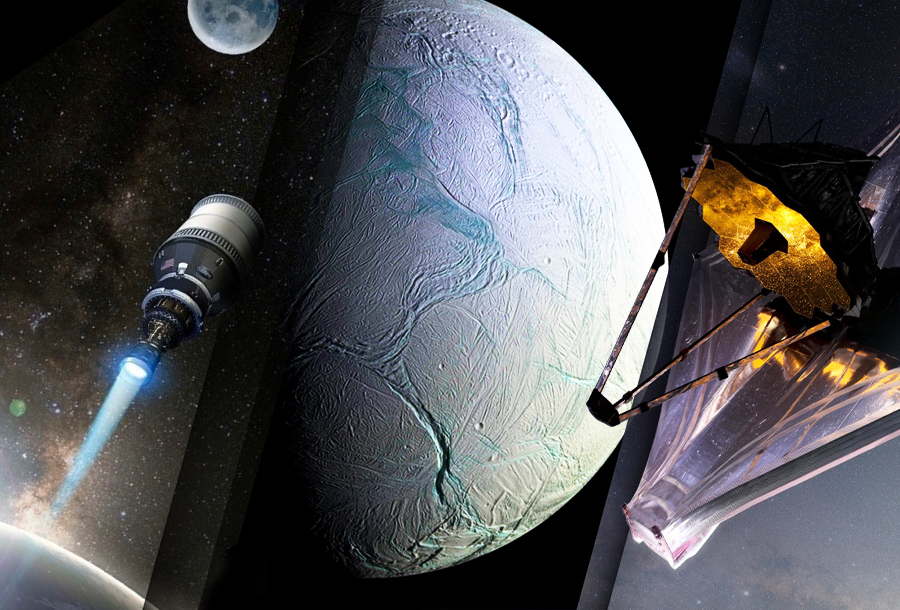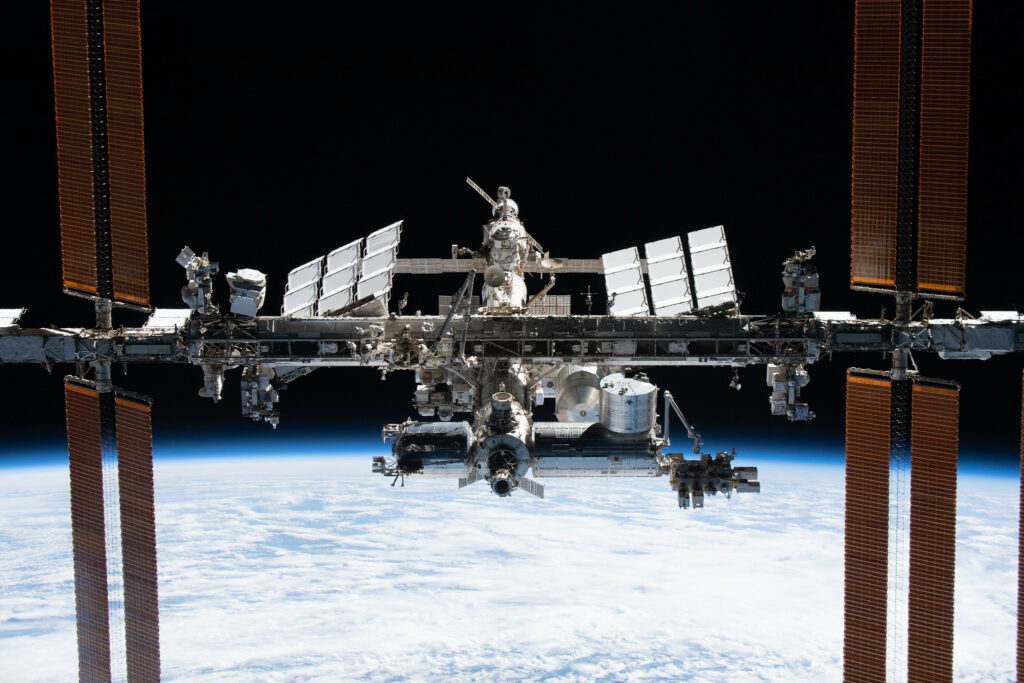Selection of space news for breakfast: We have collected for you the most interesting news from the previous week. Astronauts showed their professional sign language, oceans can exist on the moons of giant planets even at very low temperatures, and Russia decided to leave the International Space Station.

Mark Kelly not afraid of Russian antisatellite weapons
Former American astronaut and acting Senator Mark Kelly believes that Russian antisatellite weapons do not pose a significant threat. The aggressor country simply cannot use it effectively enough.
According to Kelly, even the ongoing war does not increase the chances of Russia using missiles to destroy American satellites. According to him, the tests of these missiles last autumn had to be carefully planned, and its results were a surprise even for Putin’s space forces themselves.
Max Polyakov’s EOS made it possible to obtain high-precision satellite images thanks to a commercial deal with GEOSAT
Despite the risks of the information agenda in the conditions of military aggression, the message about the deal appeared in the public space only now.
GEOSAT 2 has become the first satellite that already transmits operational surveillance data over the territory of Ukraine exclusively for use by our country. The satellite is in orbit and allows receiving data with ultra-high resolution, previously unavailable for Ukraine. It also provides an opportunity to take pictures at a distance of 100 kilometers from the state borders of Ukraine. Launched into orbit in January 2022, the Ukrainian satellite Sich-2-30 has a much lower resolution.
Outstanding capabilities of James Webb compared with other telescopes
The James Webb Space Telescope is now at the final stage of calibration before it begins to work fully for the benefit of science. But even at the stage of focusing, it has already impressed the scientific community with its capabilities when it sends photos of the remote depths of our cosmos. These test images give an initial idea of how powerful JWST will be and how much infrared astronomy will improve. Engineers say that the optical characteristics of the JWST turned out to be better than the most optimistic predictions, and astronomers are beside themselves with excitement.
Water on icy moons can freeze at very low temperatures
Salt water freezes at temperatures well below zero Celsius. Ordinary water under pressure of thousands of atmospheres can also last up to significant sub-zero temperatures. But what happens if salinity and pressure meet together?
A series of experiments have shown that in this case the effects will develop in a rather tricky way, but in any case, we are talking about maintaining the liquid state to a temperature of tens of degrees below zero. Such conditions are found on many icy moons of giant planets.
Gravitational lens of the Sun helps to see exoplanets
Scientists propose to use the effect of bending the rays of stars by the gravitational field of the Sun to get an image of an exoplanet. Thus, it is possible to get 1000 times better magnification than the most advanced modern technologies allow.
Market News

DARPA announced the search for contractors for the next stages of the development of a spacecraft with a nuclear thermal propulsion
The Defense Advanced Research Projects Agency of the US Department of Defense (DARPA) has published a request for proposals for the next stage of the demonstration of a spacecraft with nuclear thermal propulsion.
The Demonstration Rocket for Agile Cislunar Operations (DRACO) project started a year ago. DARPA has selected three contractors for the preliminary design of the rocket engine reactor: General Atomics, Blue Origin and Lockheed Martin.
Cosmic divorce. Can the ISS survive without Russia?
After the beginning of the large-scale Russian aggression against Ukraine, the International Space Station (ISS) actually remained the only technological thread connecting Russia with Western countries. But it is already obvious that in the near future it will also be cut.
Rogozin has made a number of statements about the future of the ISS. If we wade through the mixture of rudeness and threats typical for the head of Roscosmos, they can be reduced to the fact that Russia has decided to leave the station. All this raises a legitimate question — will the ISS be able to survive after Russia leaves, or is the station doomed?
Interesting
How astronauts communicate in space without words
Humans are an extremely socialized and chatty species that uses speech as the main form of communication. Astronauts in the cold vacuum of space must rely on other means of information exchange. They mostly use a communications set. But how to communicate in an airless space if the radio systems suddenly fail when going into outer space?
Perseverance on Mars accidentally created an installation in the style of “zen art”
The NASA Perseverance geologist rover, engaged in revealing the secrets of life on Mars, has transmitted a desolate but charming photograph from the surface of the planet. The picture shows dusty Martian rocks scattered across the barren land. The traces of the rover next to the stone loomed in the likeness of a unique installation of symbolic art. This attracted the attention of both the space agency and the public.
Scientists to say the time of the first contact with aliens
Scientists in a new study predicted that the next 400 thousand years should not expect any contact with aliens. It is noteworthy that this number is twice as much as the human species Homo sapiens has existed on the planet — about 200 thousand years.
Calculations based on the Drake equation show that, in the case of the existence of a hypothetical star with a habitable planet around it, intelligent life will arise at the stage of 25% of the life of the luminary. However, the number of habitable planets may be only 0.1% of all existing in the Universe. But it’s still an encouraging amount.
Read also:
Follow us on Twitter to get the most interesting space news in time
https://twitter.com/ust_magazine

